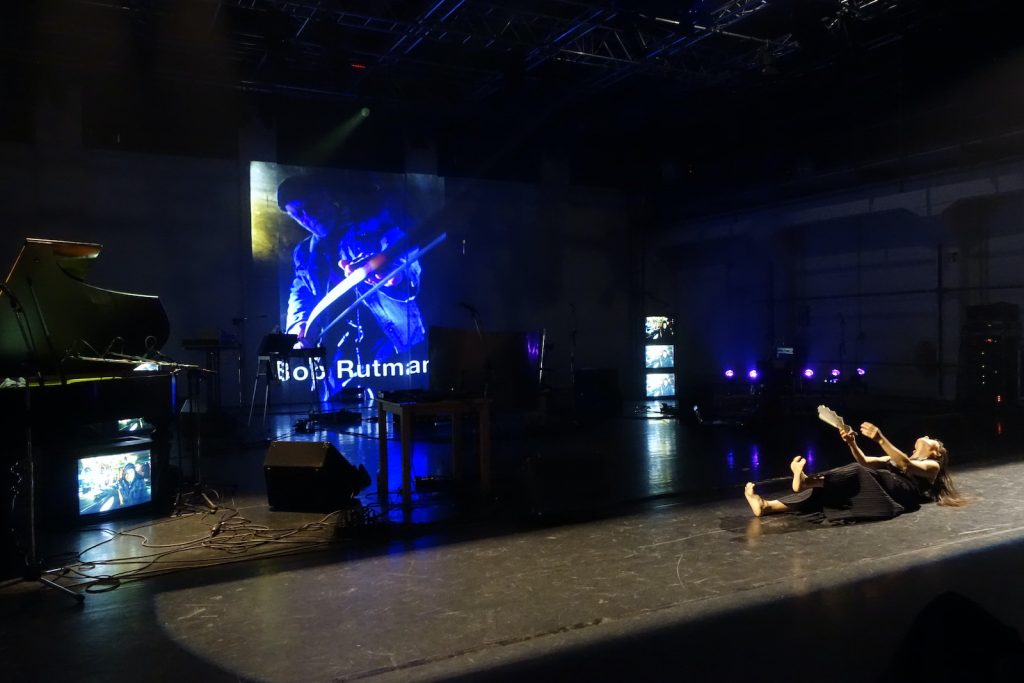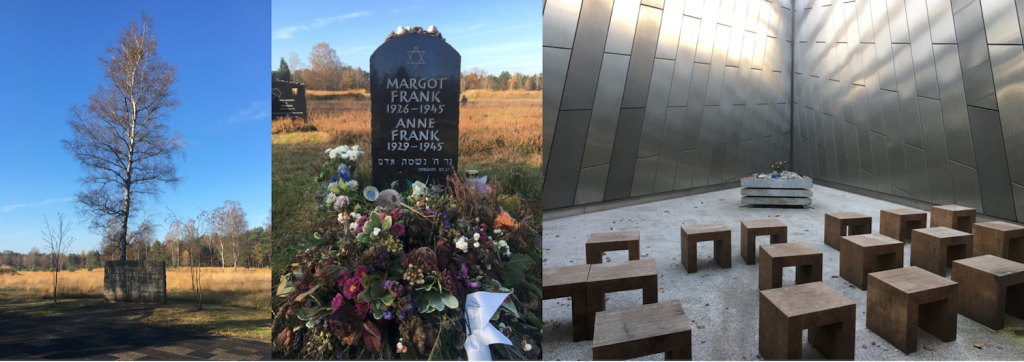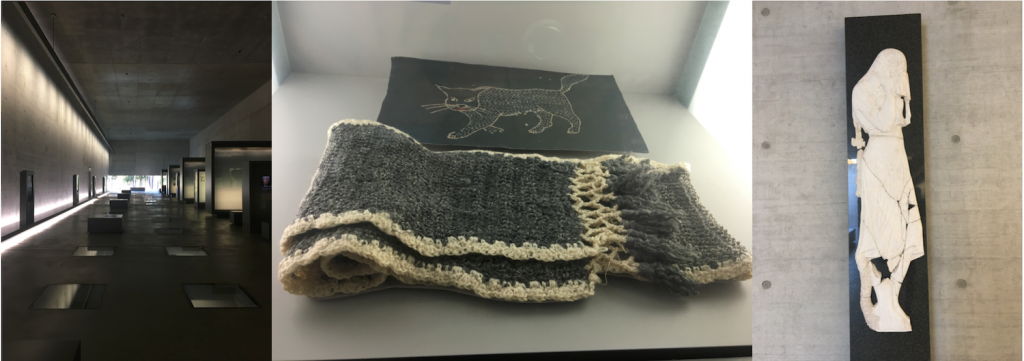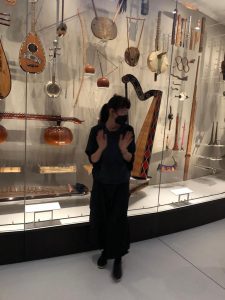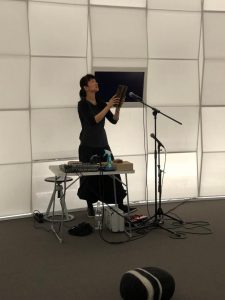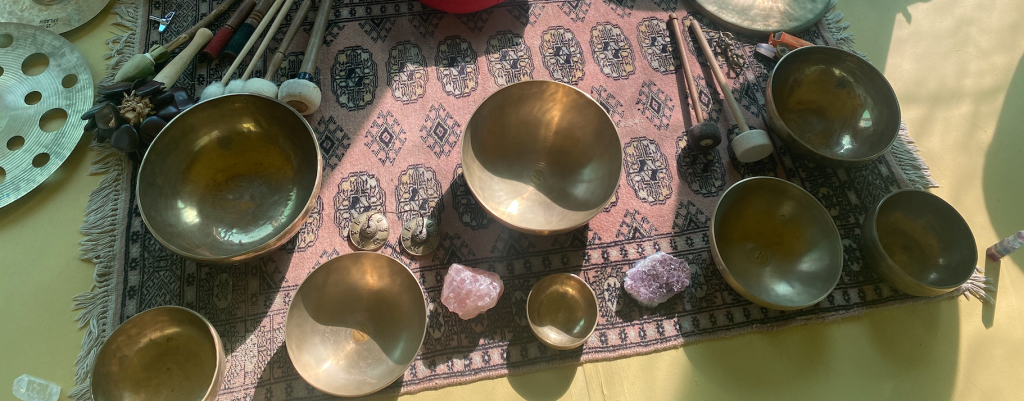
Workshop SERENDIPITY – New Year Sound-bath & Improvisation
Yuko Matsuyama & Nico Lippolis
Mid. February.2024 at Tanzfabrik Berlin Studio3
Serendipity is New Year Sound-bath (Klangbad) & improvisation.
It is open for everyone.
We offer 120min. practice with sound bath, voice warmup into group improvisation (voice and/or movement).
– Sound meditation and Voicing –
What we hear as a sound or music is vibration in the air.
To prepare our mind for improvisation, we’ll observe the sensation of vibration of the air that exists outside and inside our body.
Listening to the air is a quiet yet an intensive action, as if re-experience the wind and calm in our memory.
Our practice will start from Pranayama (breathing method) and sound meditation with singing bowls.
After observing the silence inside of us, we start open our voice and movement.
Vocal exercises are focus on the sensation of vibration and harmony.
We’ll then apply this awareness of vibration in the air, exploring it in improvisation.
Schedule: Mid.February, 2024. 14:00-16:00 (120min.)
Level: Open
Price: 25€ (Students 20€) / cash or PayPal
Reservation and/or question: yuko@yuhki.de
Previous workshop with Nico Lippolis & Yuko Matsuyama
Aug. 2023 Workshop TUNING INTO THE WILD with Fransisco Zita at Casina Settarte, Puglia, Italy.
WS2023 – Movement & Music Seminar at Danceworks Berlin
NICO LIPPOLIS – sound artist, drummer, percussionist and sound therapist.
Instagram: https://www.instagram.com/nico.lippolis/
YUKO MATSUYAMA – Performance artist (vocal & dance), Pilates based physical trainer.
Web: www.yuhki.de
Instagram: https://www.instagram.com/yuko_mtsym/
Workshops and lecture performances (recent years)
Since 2021 – various lecture performances at the Ethnologische Sammlungen und Asiatische Kunst, Humboldt Forum, Berlin
Sep. 2023 Workshop Kimono & Tanz at the Berlin Asian Arts Festival
SS2021 – Seminar at MA Choreography at HfS Ernst Busch (HZT Berlin)
SS2020 – Lectureship (voice) at BA Performance & time based media, UDK Berlin

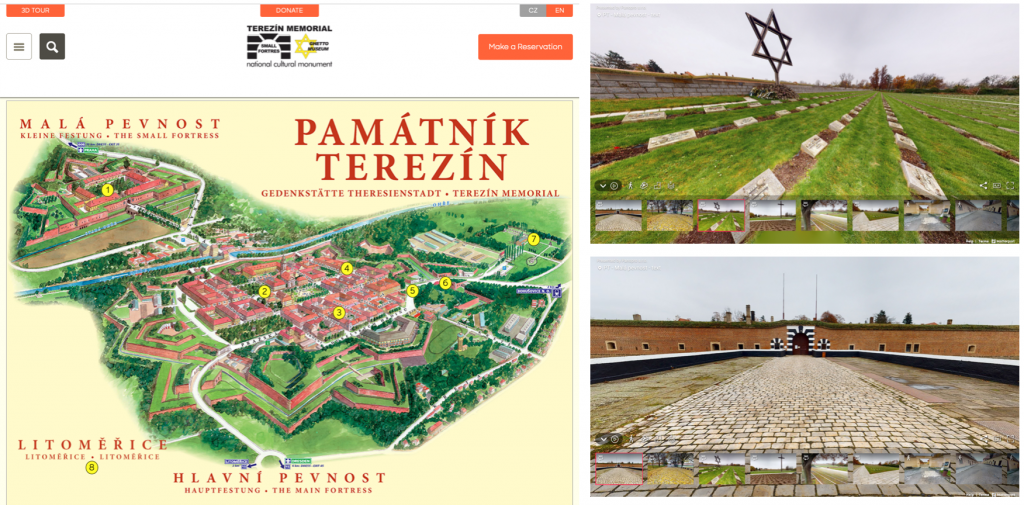
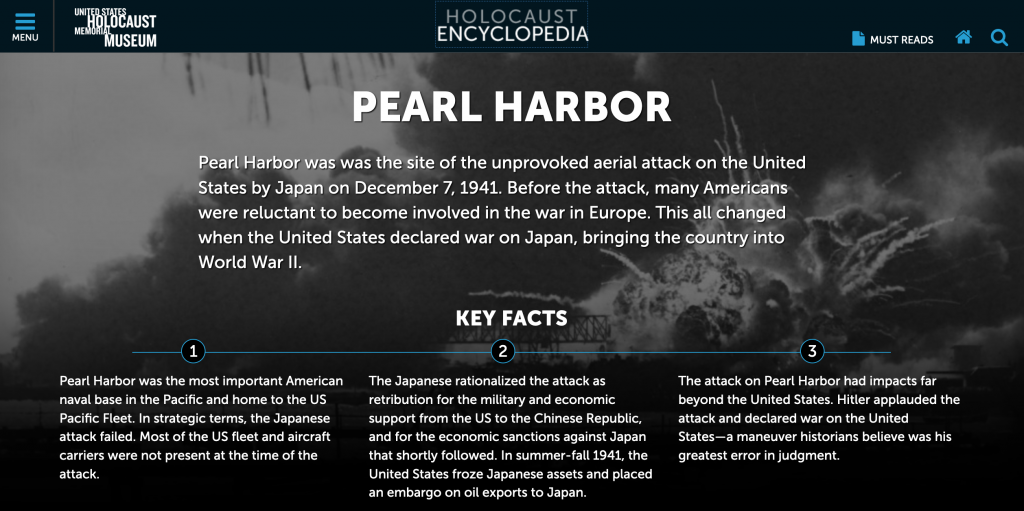
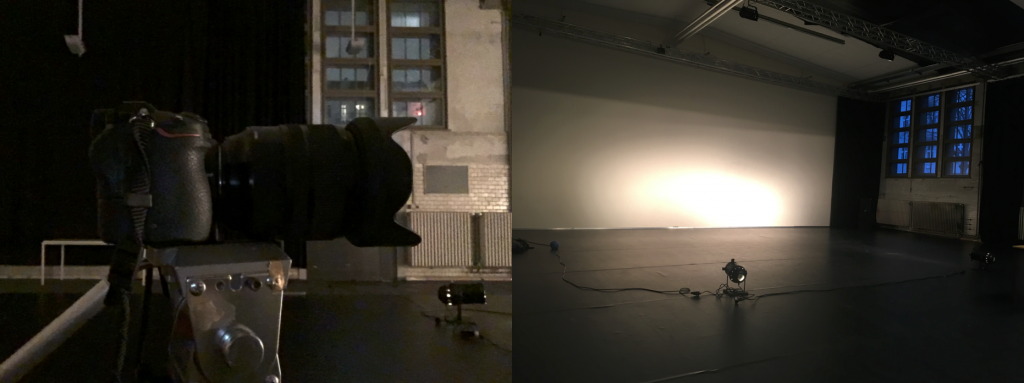
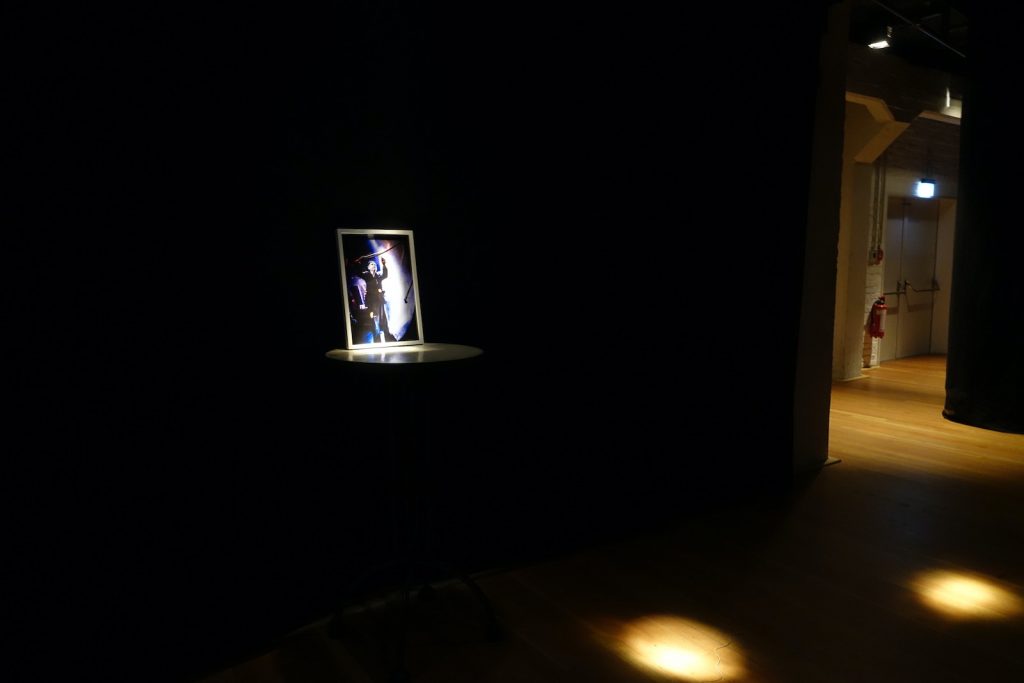 The Japanese folding-fan is one of the important tool for this research.
The Japanese folding-fan is one of the important tool for this research.
